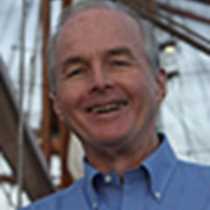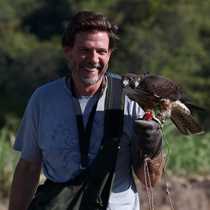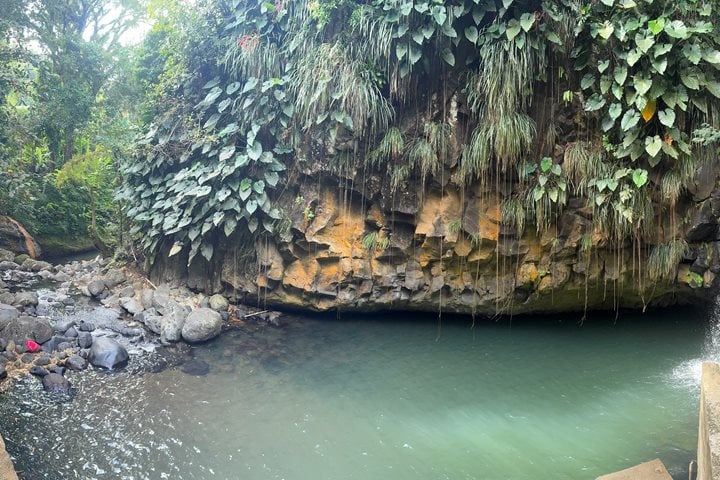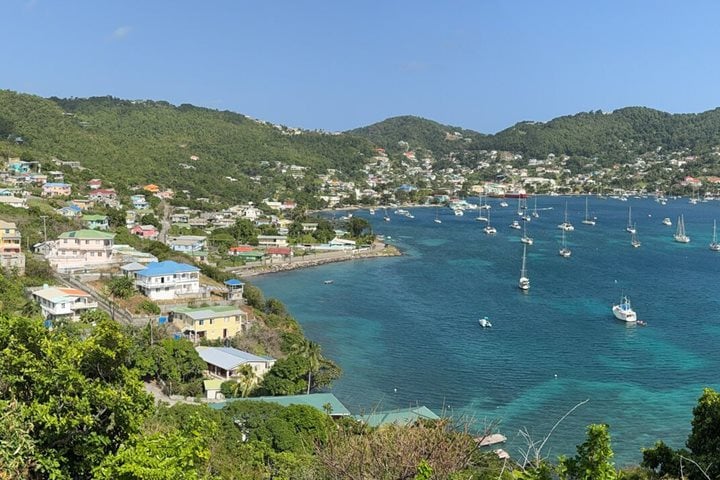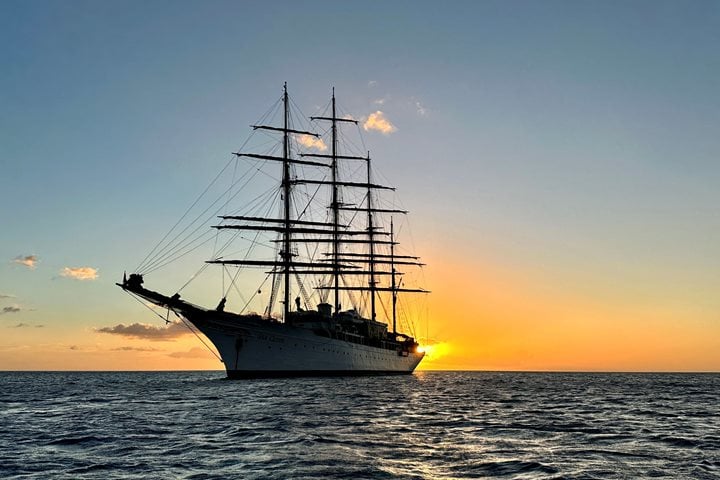We arrived in the idyllic bay of Port Elizabeth, the main city on the tiny island of Bequia at 7:30 a.m. Bequia is a tiny island only a few square miles in size but possessed of enormous cultural diversity. The early Europeans who came here included a number of indentured Scotts who worked on the early sugar plantations. When they came here there was still a small relic population of Carib Indians on the island. These original settlers who emigrated up from the Orinoco basin centuries earlier had already begun to mix with the African population also brought to work the sugar plantations. The largest of these plantations were located on the east side of the island, near Industry Bay. The people who resulted from this Carib/African mix were called “Garafuna,” or sometimes “Black Carib.” I cannot testify to my following etymology but it sounds to me as if the word “Garafuna” may be a dialect expression of “Caribe-fumé” with “fume” suggesting the darkening of the skin when the races mixed. There was a Black Carib revolt against the English overlords in 1795 and the English executed one of the great Caribe chiefs, Joseph. At one point in 1795 the “Garafuna” controlled the entire island of St. Vincent for almost six months. They were finally beaten and approximately 5,000 Garafuna were rounded up and sent to one of the small islets just off the southeast coast of Bequia. They remained there until 1798 when the survivors were resettled in Honduras and Belize. Some of their descendants make a pilgrimage to Bequia in memory of their ancestors. Today all of the citizens of Bequia live in harmony with one another.
We boarded our first tender and landed on the pier at 8:45 where we got into the small pickups with benches for our tour of the island. We made three very interesting stops. Our first stop was the scenic overlook of Mount Pleasant, one of the highest points on the island. We could see Mustique to our south and east where many of the globetrotters of the world have homes and vacation, e.g., Princess Margaret, Mick Jagger, Prince William and Princess Kate (nee Middleton). Our guides pointed out where the whaling station is still located and described the whaling, which still takes place here. The people of Bequia are allowed to take four whales a year and the best season is the early spring. They hunt the whales in the traditional manner in open skiffs powered only by sail and with hand thrown harpoons. The nature of the hunting was considered subsistence and since it was not mechanized and practiced for centuries they have been allowed to continue it. Some years they get no whales. Before we left our four guides sang us a traditional island whaling song. We then drove to the north side of the island to an early defensive battery named Fort Hamilton, where there is battery today of five canons (four English and one French). The fort has an association with Alexander Hamilton, the first treasurer of the United States and a native of the Caribbean.
Our next stop was to the turtle sanctuary of Brother Orton King, a former commercial turtle fisherman who some years ago came to the realization that the turtles, fish, and reefs, which he knew as a child, were being destroyed by overfishing and other exploitative industries. Brother King vowed to help serve the turtles and so began to raise recently hatched hawksbill and green turtles in pools. To date he has released 935 turtles and this year he expects to see his first mature adults return to lay their eggs. He receives no government support for his work and as a result we have always elected to visit him to support his efforts.
Back at the harbor we boarded the tender and some went to Jack’s Bar, a wonderfully welcoming restaurant bar right on the sea for fruit and rum punches. A goodly number of punches were drunk! Some of us also went for a swim in the crystalline clear water. A wonderful pasta lunch was served and then most of us went off to do a bit of packing so that we would be ready for our Captain’s farewell dinner. Complimentary cocktails and the festivities for our last night together were on the lido deck beginning at 6:30 p.m. I find these last nights both festive and slightly sad as we have made so many new friends and now must say goodbye. Perhaps we should rather say until we sail again and bon voyage.



